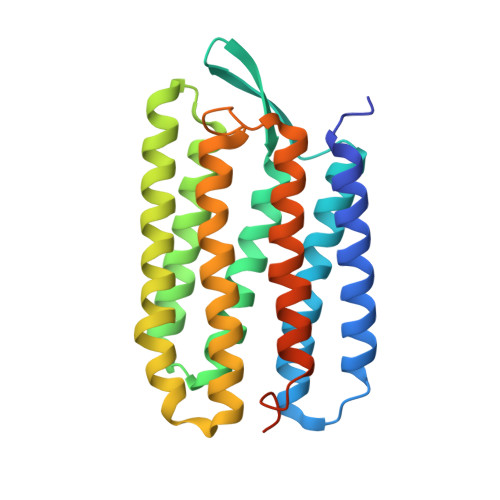The evolution of transmembrane helix kinks and the structural diversity of G protein-coupled receptors.
Yohannan, S., Faham, S., Yang, D., Whitelegge, J.P., Bowie, J.U.(2004) Proc Natl Acad Sci U S A 101: 959-963
- PubMed: 14732697
- DOI: https://doi.org/10.1073/pnas.0306077101
- Primary Citation of Related Structures:
1Q5I, 1Q5J - PubMed Abstract:
One of the hallmarks of membrane protein structure is the high frequency of transmembrane helix kinks, which commonly occur at proline residues. Because the proline side chain usually precludes normal helix geometry, it is reasonable to expect that proline residues generate these kinks. We observe, however, that the three prolines in bacteriorhodopsin transmembrane helices can be changed to alanine with little structural consequences. This finding leads to a conundrum: if proline is not required for helix bending, why are prolines commonly present at bends in transmembrane helices? We propose an evolutionary hypothesis in which a mutation to proline initially induces the kink. The resulting packing defects are later repaired by further mutation, thereby locking the kink in the structure. Thus, most prolines in extant proteins can be removed without major structural consequences. We further propose that nonproline kinks are places where vestigial prolines were later removed during evolution. Consistent with this hypothesis, at 14 of 17 nonproline kinks in membrane proteins of known structure, we find prolines in homologous sequences. Our analysis allows us to predict kink positions with >90% reliability. Kink prediction indicates that different G protein-coupled receptor proteins have different kink patterns and therefore different structures.
Organizational Affiliation:
Department of Chemistry and Biochemistry, UCLA-DOE Institute for Genomics and Proteomics, Molecular Biology Institute, University of California, Los Angeles, CA 90095, USA.















